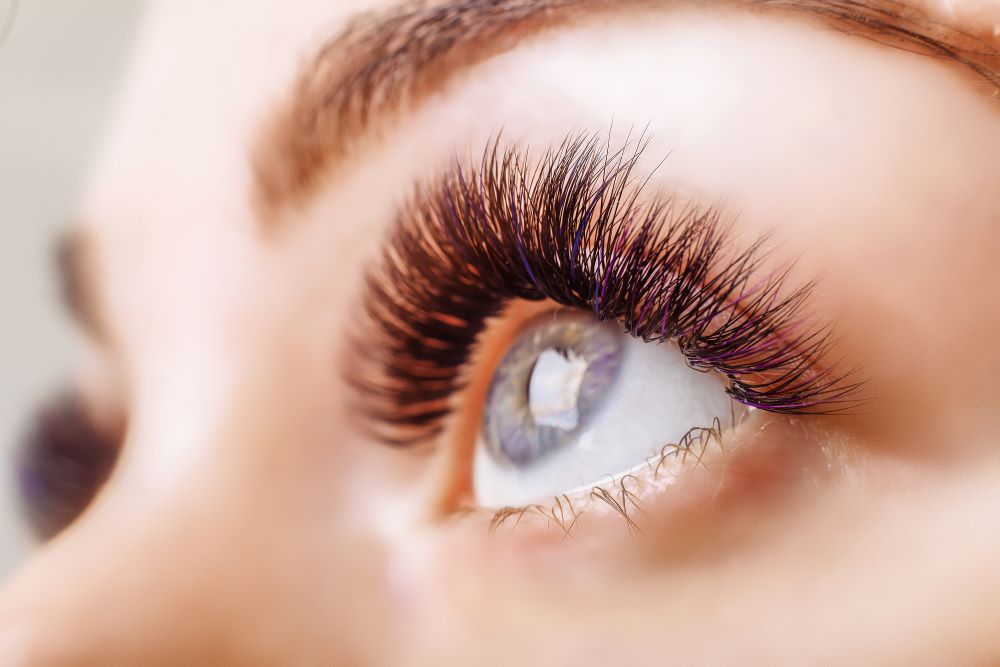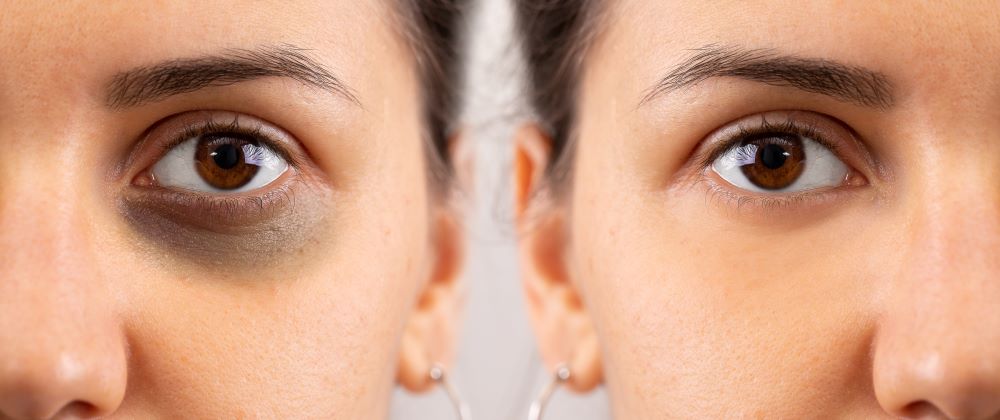Trockene Haut im Gesicht ist äußerst unangenehm und muss um jeden Preis behandelt werden. Schuppen, Reizungen und Rötungen sind verräterische Anzeichen für empfindliche Haut. Jeder wünscht sich eine gesunde, geschmeidige und attraktive Haut. Jeder, der schon einmal trockene Haut im Gesicht hatte, weiß, wie schmerzhaft sie ist. Haben Sie trockene, juckende und gereizte Haut? Da sind Sie nicht allein. Tatsächlich leiden Millionen von Menschen jeden Tag unter trockener Gesichtshaut. Aber was ist die Ursache für diesen unangenehmen Zustand? Und was noch wichtiger ist, was können Sie dagegen tun? Lesen Sie weiter und finden Sie es heraus!
Welche Hauttypen sind von trockener Haut im Gesicht betroffen?
Wenn Sie trockene Haut haben, äußert sich das oft durch einen blassen Teint, dünne Schuppen und rote Stellen. Ihr gesamtes Erscheinungsbild kann müde wirken. Möglicherweise sehen Sie auch kleine Fältchen auf Ihren Wangen und spüren Juckreiz und Spannungsgefühle auf Ihrer Haut. Das Gesicht ist manchmal in bestimmten Regionen röter. Ist jeder Hauttyp anfällig für trockene Gesichtshaut, oder liegt es am fortschreitenden Alter und der beschleunigten Hautalterung? Hier erfahren Sie, ob Ihre Haut normal, fettig, trocken oder eine Mischhaut ist.
- Normale Gesichtshaut: Dies ist der ideale Hauttyp. Sie ist weder zu trocken noch zu fettig, und sie ist ziemlich glatt. Externe Faktoren können dazu führen, dass normale Haut trocken wird, auch wenn sie vorher nicht übermäßig trocken oder fettig war.
- Trockene Gesichtshaut: Die rauen, roten, juckenden Flecken auf Ihrem Gesicht sind ein Zeichen dafür, dass Sie trockene Haut haben.
- Fettige Gesichtshaut: Nur wenn Sie Ihr Gesicht häufig waschen, bekommen Sie trockene Haut.
- Mischhaut: Die Haut in unserem Gesicht lässt sich grob in zwei Typen einteilen: Die T-Zone ist normalerweise fettig, während die Wangen trocken sind.
Pickel bei trockener Haut im Gesicht
Pickel bei Trockene Haut im Gesicht ist relativ ungewöhnlich. Die Poren sind feiner und die Talgproduktion ist geringer als z.B. bei fettiger Haut. Dadurch verringert sich das Risiko der Bildung von Mitessern und Pickeln.
Trockene Haut im Gesicht: Das können die Ursachen sein
Gesunde Haut ist in der Lage, ihren Öl- und Feuchtigkeitsgehalt selbst zu regulieren. Trockene Haut kann dies leider nicht und braucht zusätzliche Hilfe von Ihnen. Es gibt einige Gründe, warum trockene Haut ihren Fett- und Feuchtigkeitsgehalt nicht selbst regulieren kann, wie es gesunde Haut tut.
Ursachen für trockene Haut im Gesicht:
- Unverträgliches Make-up
- Älteres Alter führt zu einem langsameren Stoffwechsel der Haut
- Hitze, Kälte, Wind, Luftverschmutzung
- Heizung und Klimatisierung
- Rauchen, Alkoholkonsum und Ernährung wirken sich alle auf Ihre Haut aus.
- Allergien, Krankheiten und vererbte Faktoren
- Langfristiger Stress oder psychische Erkrankungen
- Stoffwechselkrankheiten
Wie Sie aus den aufgeführten Ursachen für trockene Haut ersehen können, gibt es sowohl innere als auch äußere Faktoren. Um die meisten dieser Probleme sollten Sie sich jedoch selbst kümmern können.
Wie kommt es zum Feuchtigkeitsverlust der Gesichthaut?
Generell muss man sagen, dass die Gesichtshaut weitaus empfindlicher und dünner ist als andere Hautpartien des Körpers. Wenn man bedenkt, dass das Gesicht eine der wenigen Stellen des Körpers ist, die zu allen Jahreszeiten dem Sonnenlicht, Schmutz und anderen Faktoren ausgesetzt ist, muss diese Schicht jeden Tag eine erstaunliche Leistung für uns erbringen. Sowohl innere als auch äußere Einflüsse können diese Leistung beeinträchtigen.
Äußere Einflüsse
Im Winter ertragen wir Wind und kalte Außentemperaturen sowie trockene Heizungsluft in unseren Gesichtern. Dies führt schließlich dazu, dass die Haut dehydriert wird. Aber auch häufiges Waschen, starke Pflegeprodukte und lange heiße Bäder oder Duschen können zu mehr Trockenheit im Gesicht beitragen. Der Schutzfilm der Haut und der Gesichtshaut wird gestört, wenn Sie sich häufig waschen, aggressive Pflegeprodukte verwenden oder lange heiße Bäder oder Duschen nehmen. Übermäßige Sonneneinstrahlung kann sich auch negativ auf die Gesichtshaut auswirken. Daher empfehlen wir Ihnen, eine Tagescreme mit einem Lichtschutzfaktor von 30 oder höher zu verwenden. Bei Sonnenschutzmitteln sollten Sie darauf achten, dass sie zusätzlich zum erforderlichen Lichtschutzfaktor feuchtigkeitsbindende Wirkstoffe enthalten.
Innere Einflüsse
Damit unsere Haut uns vor äußeren Einflüssen schützen kann, müssen bestimmte grundlegende Kriterien erfüllt sein. Diese können jedoch von Mensch zu Mensch sehr unterschiedlich sein. Die Beschaffenheit unserer Gene bestimmt die Farbe, die Barrierestärke, den Feuchtigkeitsgehalt und den Lipidgehalt unserer Haut. Dies bedeutet, dass sich die Feuchtigkeit und der Fettgehalt der Haut verschiedener Personen unter gleichen Bedingungen erheblich unterscheiden können.
Drei der häufigsten inneren Ursachen für trockene Gesichtshaut sind Vererbung, Hormone und das Alter. Wenn der Hormonspiegel einer Person schwankt (z.B. während der Pubertät oder der Menopause), kann dies ebenfalls den Feuchtigkeitshaushalt der Haut durcheinanderbringen. In der Menopause sinkt der Östrogenspiegel der Frau, was in der Regel zu einem stärkeren Feuchtigkeitsverlust und einer geringeren Talg- und Lipidproduktion in der Haut führt - mit dem Alter wird die Haut trockener. Wenn es um trockene Gesichtshaut geht, haben sowohl das Alter als auch die Menopause einen Einfluss. Je älter Sie werden, desto trockener wird Ihre Haut und sie verliert ihre Spannkraft und Geschmeidigkeit. Gelegentlich trägt auch psychischer Stress zur Trockenheit der Haut bei.
Wo ist die Haut im Gesicht besonders oft trocken?
- Unter den Augen: Die Haut um die Augen ist sehr empfindlich und zart. Ein Mangel an Feuchtigkeit oder äußere Reize machen sich hier schnell bemerkbar, meist in Form von trockenen Flecken im Gesicht.
- An der Nase: Wenn Sie Ihre Nase zu häufig schnäuzen, wird sie gereizt, rot und rissig.
- An den Wangen: Menschen mit Mischhaut oder trockener Haut sowie Kinder haben oft rauere, schuppigere Wangen. Die Talgdrüsen sind in diesem Bereich des Gesichts im Allgemeinen spärlicher als beispielsweise in der T-Zone.
- Trockene Lippen: Die Lippen haben nur wenige Talgdrüsen, die Öl produzieren, was zu einer trockenen Umgebung führt. Diese empfindliche Hautpartie ist in den Wintermonaten besonders anfällig für Trockenheit.
Wenn Sie nur an einigen Stellen Ihres Gesichts trockene Flecken haben, während die Bereiche um Nase, Kinn und Stirn fettig sind, spricht man von Mischhaut. Natürlich kann trockene und sogar sehr trockene Haut auch an anderen Körperstellen wie den Händen, Füßen, Beinen oder Ellenbogen auftreten.
Unterschied zwischen trockener Haut im Gesicht und sehr trockener Haut
Wenn es Ihrer Haut an Feuchtigkeit mangelt, wird sie schnell unausgeglichen und spürbar. Trockene Gesichtshaut ist dann schwer zu regulieren und führt, wenn sie unkontrolliert bleibt, nicht nur zu vermehrten Falten, sondern auch zu vorzeitiger Hautalterung.
Trockene Haut:
- Gefühl von Spannung
- Haut ist anfällig für Rauheit.
Sehr trockene Haut:
- Gefühl der sehr starker Spannung
- Haut mit Schuppen
- Spröde
- Jucken
Trockene Gesichtshaut im Winter
Um sicherzustellen, dass Ihre Gesichtshaut im Winter gesund bleibt, muss sie richtig gepflegt werden. Produkte mit Hyaluron und Ectoin sind ideal für den Winter, denn sie helfen dabei, die Feuchtigkeit zu speichern. So können Sie trockene Haut wirksam bekämpfen!
Hausmittel bei trockener Haut im Gesicht
Viele von uns haben im Winter das gleiche Problem: Kälte und trockene Heizungsluft reizen unsere Haut und lassen sie austrocknen. Bald beginnt sie zu jucken, spannt und kratzt stark. Viele Menschen kaufen sofort hochpreisige Cremes oder Medikamente, die trockene Haut garantiert schnell verschwinden lassen. Mit ein paar einfachen Hausmittel können Sie jedoch wieder eine gesunde und strahlende Haut bekommen.
1. Aloe Vera
Aloe Vera (Aloe barbadensis Miller) ist bekannt für ihre Fähigkeit, Sonnenbrände zu heilen, aber sie kann auch im Winter hilfreich sein. Aloe-Vera-Gel kann als Hausmittel gegen trockene Haut großartige Ergebnisse erzielen: Das durchscheinende Gel kann zu Hause gewonnen und auf die schuppigen Stellen an den Händen und im Gesicht aufgetragen werden; es eignet sich auch sehr gut für trockene Haut an den Beinen. Sie dürfen nach der Anwendung nicht sofort in die Kälte gehen, da die kalte Luft der Haut schnell die gewonnene Feuchtigkeit entzieht.
2. Kamille
Kamille (Matricaria chamomilla) ist ein Tee, der von vielen zur Linderung von Magen-Darm-Problemen oder Erkältungen verwendet wird. Weniger bekannt sind jedoch die positiven Auswirkungen der Kamille auf die Haut. Kamille hat sowohl beruhigende als auch antibakterielle Eigenschaften, die bei trockener und rissiger Haut oder sogar bei entzündeten Hautstellen sehr hilfreich sein können. Die ätherischen Öle der Kamille sind nicht nur beruhigend, sondern haben auch eine rückfettende Wirkung, wenn sie in Lotionen oder Cremes verwendet werden. Wenn Sie keines davon zur Hand haben, kann auch Kamillentee die Beschwerden wirksam lindern. Dieses Hausmittel hat sich als besonders hilfreich bei trockenen Händen erwiesen - tauchen Sie Ihre Hände einfach kurz in lauwarmen Kamillentee. Kamille hat zwar eine reizlindernde und antiseptische Wirkung, aber sie spendet nicht viel Feuchtigkeit. Sie sollten danach eine Feuchtigkeitscreme auftragen, um trockene Haut zu vermeiden.
3. Karotten
Karotten sind nicht nur ein gesunder Snack für den Winter, sondern auch gut für Ihre Haut! Karotten enthalten große Mengen an Vitamin A und Beta-Carotin, die perfekt sind, um Ihrer Haut die Nährstoffe zu geben, die sie braucht. Dieses Hausmittel für trockene Gesichtshaut ist ein echtes Insidergeheimnis: Entsaften Sie einfach zwei Karotten (idealerweise bio) und tragen Sie das "Gesichtswasser" auf die betroffenen Stellen auf. Warten Sie 20 Minuten, bevor Sie den Karottensaft abspülen. Seien Sie jedoch vorsichtig, da wiederholte Anwendung oder sehr empfindliche Haut zu leichten Verfärbungen führen kann.
4. Ringelblume
Die Ringelblume (Calendula officinalis) ist ein beliebtes Hausmittel zur Behandlung trockener Haut. Die ätherischen Öle besitzen antibakterielle Eigenschaften und können die schnelle Regeneration der gereizten Haut fördern. Eine der gebräuchlichsten Arten, Calendula zu verwenden, ist eine Salbe, die Sie leicht zu Hause herstellen können. 250 Milliliter natives Olivenöl extra und 50 Gramm frische, fein gehackte Ringelblumenblüten (bei getrockneten Blüten nur 25 Gramm) werden miteinander vermischt und 15 Minuten lang bei schwacher Hitze geköchelt. Die Öl-Blüten-Mischung wird durch ein Leinentuch abgeseiht, wobei die Blütenstängel zurückbleiben. Im nächsten Schritt fügen Sie 25 Gramm Bienenwachs hinzu. Danach erhitzen Sie die Mischung erneut, bis das Bienenwachs geschmolzen ist. Nachdem es abgekühlt und getrocknet ist, hat die Salbe eine milchig-weiße Farbe und wird fest. Ringelblumensalbe ist ein bewährtes Hausmittel für trockene Hände, Füße und das Gesicht. Die wundheilenden und antibakteriellen Eigenschaften der Ringelblume beruhigen gereizte Stellen. Olivenöl schützt die Haut vor dem Austrocknen.
5. Honig
Diejenigen, die Imker sind oder auf andere Weise natürlichen Honig gewinnen können, haben eine echte Wunderwaffe im Kampf gegen trockene Haut. Honig hat eine antibakterielle und beruhigende Wirkung, so dass er durch Bakterien verursachte Irritationen schnell lindern kann. Honig wird nicht allein verwendet, sondern mit feuchtigkeitsspendenden Substanzen zu Masken oder Ölen kombiniert. Honig kann zum Beispiel als Hausmittel für trockene Hände verwendet werden, wenn Sie einen Teelöffel Honig mit zwei Esslöffeln Olivenöl mischen. Eine Gesichtsmaske aus Honig und Magerquark hat eine feuchtigkeitsspendende und beruhigende Wirkung auf die Haut. Honig wird schon lange als Hausmittel gegen trockene Lippen verwendet, nicht nur wegen seiner feuchtigkeitsspendenden Eigenschaften, sondern auch wegen seines angenehmen Geschmacks.
Creme Tipps für trockene Haut im Gesicht
Es ist wichtig, Ihre Haut nach der Reinigung mit einer Tages- und Nachtpflege zu versorgen. Das hilft Ihrer Haut, sich zu entspannen und sie weich und geschmeidig zu machen. Auch eine Augencreme sollte Teil Ihrer Hautpflegeroutine sein, um Trockenheitsfalten vorzubeugen.

Öle verwöhnen Ihr Gesicht ein wenig mehr. Pflanzenöle, wie Argan- oder Traubenkernöl, sind hervorragend für trockene Gesichtshaut geeignet. Sie beruhigen empfindliche, trockene Haut mit heilenden Komponenten. Wenn Öle für Sie zu schwer sind, verwenden Sie stattdessen ein Gesichtsserum mit Hyaluronsäure. Dies spendet Ihrer Haut viel Feuchtigkeit.



